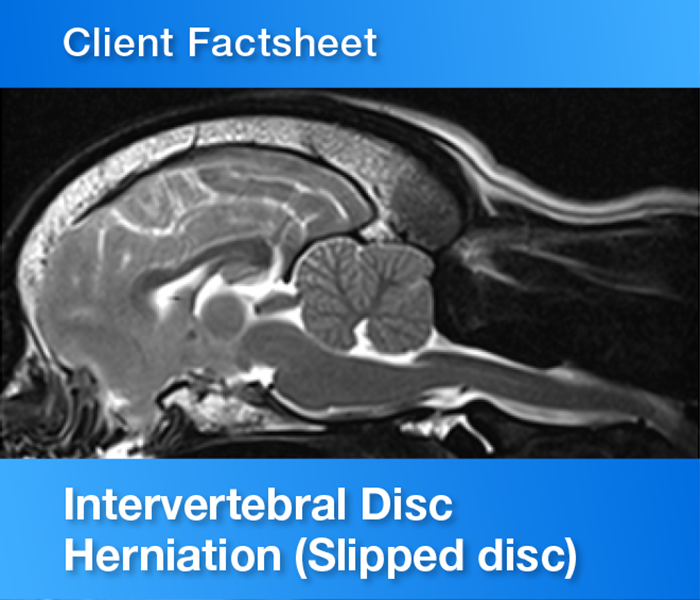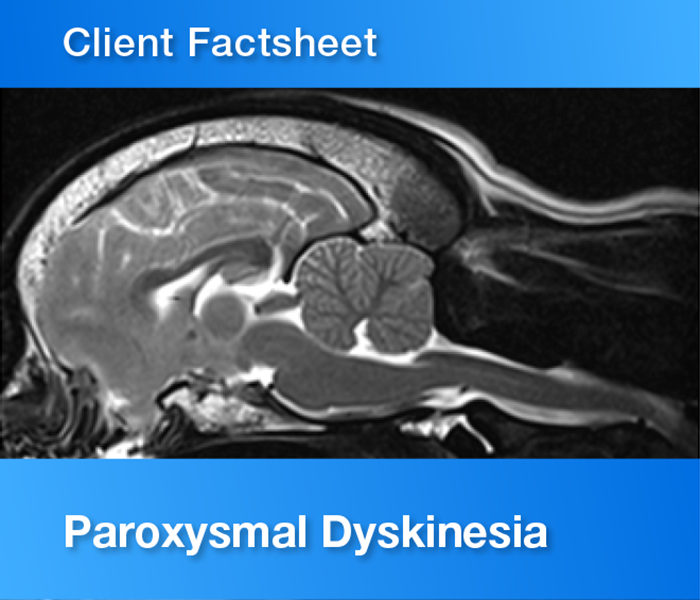
Fibrocartilaginous Embolic Myelopathy factsheet
Intervertebral discs (IVD) permit stability and support of the spine whilst allowing movement and the distribution of load between the bones of the spine (the vertebrae). To perform this function the IVD has two components: an inner jelly cushion called the nucleus pulposus; and an outer multi-layered ligament that contains the nucleus, called the annulus fibrosus.
Common causes of spinal problems in dogs include slipped disc, fractured spine and fibrocartilaginous embolic myelopathy (FCEM). FCEM is a disease that comes on very suddenly without warning and can be very frightening – however most affected dogs do recover. It is a disease of the spinal cord (myelopathy) caused by a poor blood supply (ischaemia), hence ischaemic myelopathy being the other term often used. Like any other part of the body, the spinal cord relies on a permanent blood supply to bring nutrients and remove waste products. Arteries supply defined segments of the spinal cord on each side. If one of these arteries becomes blocked the blood supply to a particular area of the spinal cord is shut off; this causes damage to the nerves running through there.
What causes an FCEM?
We do not fully understand the cause of FCEM. We know that a spinal cord injury is the result of a sudden ‘blockage’ of blood supply to the spinal cord by a fragment from the disc. There are many theories, but no-one really knows how or why this fragment of intervertebral disc suddenly gets into the spinal cord artery. There are many other more unusual causes of blockage (a fragment of tumour or fat).
FCEM most commonly occurs in mid to large breed dogs during activity (minimal trauma like heavy exercise, jumping for a frisbee, etc), but dogs of any breed or age can be affected, as can cats, horses, pigs and people.
With time, other blood vessels open up to help rescue the spinal cord, explaining how dogs can recover from this condition.
What are the signs of FCEM?
The clinical signs of FCEM are highly variable. Generally speaking the signs appear suddenly and their severity relates to the degree of spinal cord injury and subsequent dysfunction. This condition can cause paralysis of one back leg, both back legs, all four legs or only one side of the body (depending on which portion of spinal cord is affected). Typically, this paralysis comes on suddenly and does not get worse with time (at least after the first 24-hours). Pain is not a feature of FCEM, although some dogs may vocalise when the problem first happens.
The severity of spinal cord injury varies and will result in a differing ‘grade’ of injury.
Grade of Injury Clinical signs
1. Normal
2. Walking with weakness and wobbliness in the legs
3. Loss of ability to walk with some movement still in the legs
4. Paralysis with no movement in the legs
5. Paralysis with loss of feeling of a painful stimulus applied to the toes
Other diseases that cause sudden paralysis and may be mistaken for FCEM include “slipped disc” (intervertebral disc herniation – see specific fact sheet), spinal fracture or dislocation (“broken neck” or “broken back”), spinal cord bruising (spinal cord contusion) caused by a road traffic accident or a bad fall.
How do you diagnose FCEM?
A diagnosis of FCEM is often made by ruling out other causes of acute paralysis (see above).
Following a sudden onset of compatible signs, diagnosing FCEM can be done in one of two ways:
- An X-ray or CT scan with a contrast study (myelogram) to rule out spinal cord compression from the other most common cause of compatible signs, which is a slipped disc.
- An MRI scan.
In most animals with ischaemic myelopathy the results of these tests come back as normal. Since your vet is relying on absence of findings on X-ray or MRI scan, to make a diagnosis it is essential that the correct portion of the spinal cord is checked. Occasionally, swelling of the spinal cord can be detected on X-rays or MRI scans.
Can FCEM be treated?
There is no specific treatment for ischaemic myelopathy but most dogs tend to recover within a few weeks provided they have retained the ability to feel pain in their feet. Treatment is supportive as the body compensates for the loss of spinal cord perfusion: rest, physiotherapy and time. Surgery is not required.
Physiotherapy and hydrotherapy are key to successful recovery from FCEM. The recovery period may be long and require intensive nursing, so can be quite expensive.
What is the prognosis of FCEM?
The prognosis for recovery from FCEM is based on the severity of the spinal cord injury. More specifically, the ability of your pet to feel its toes (so called, ‘deep-pain’ or nociception) suggests to us that some nerve fibres still send information back and forth and the spinal cord has the capacity to recover.
Ultimately, the rate and extent of recovery is variable and difficult to predict. Dogs with mild spinal cord injuries can recover quickly and fully. Dogs with severe injuries may also recover, but the time taken can be much longer. The presence of incontinence may affect the prognosis. Animals are typically hospitalised following FCEM until they are able to urinate voluntarily.
There is very little chance of recurrence of this problem in an animal’s life.


